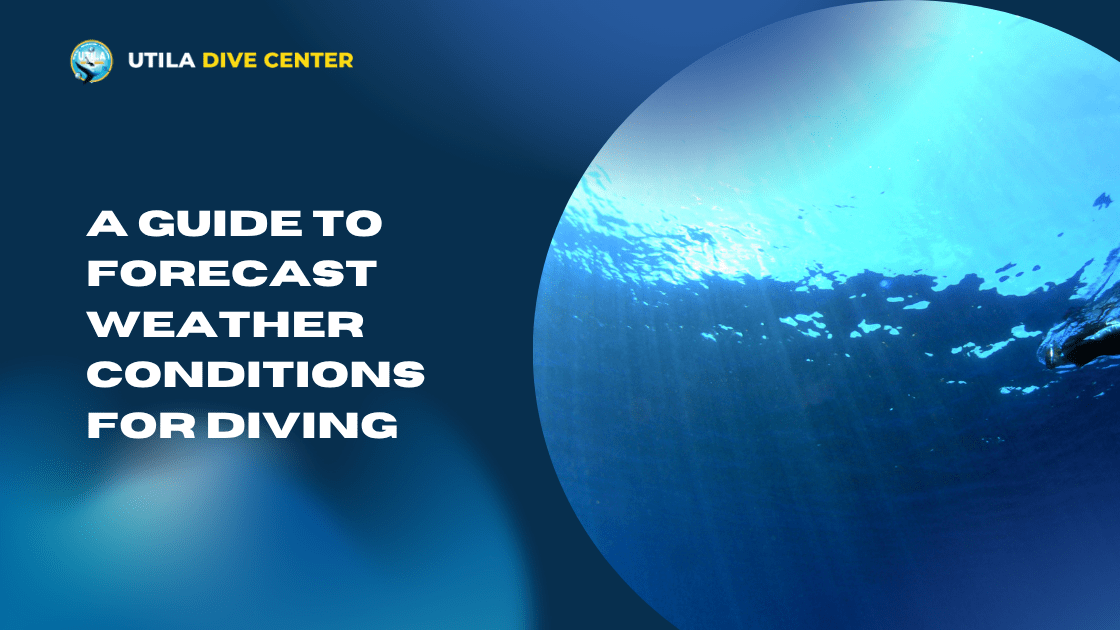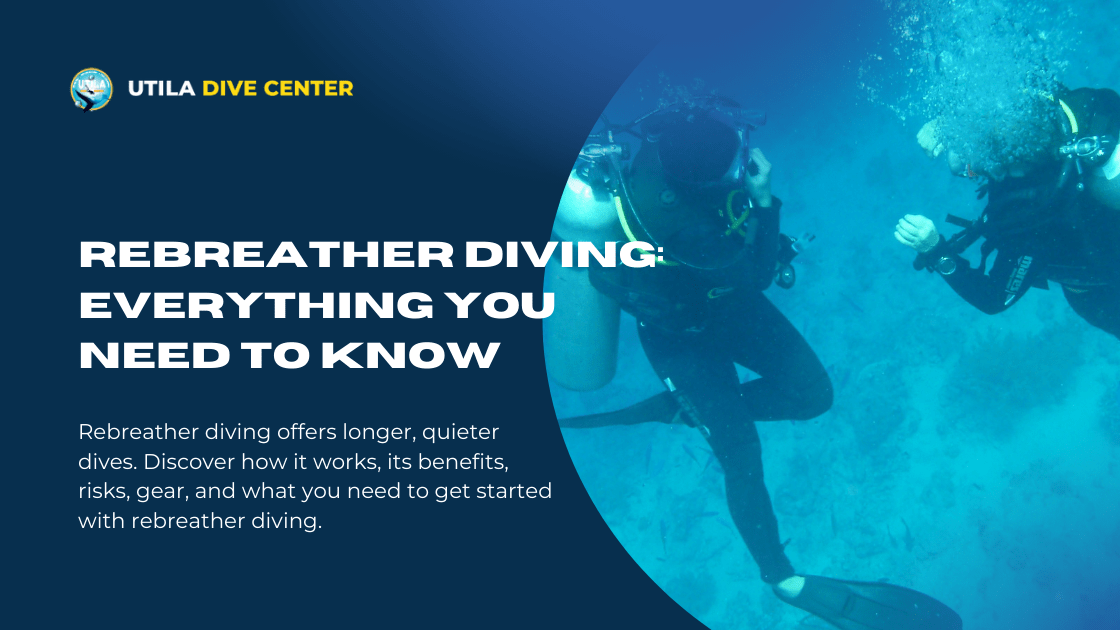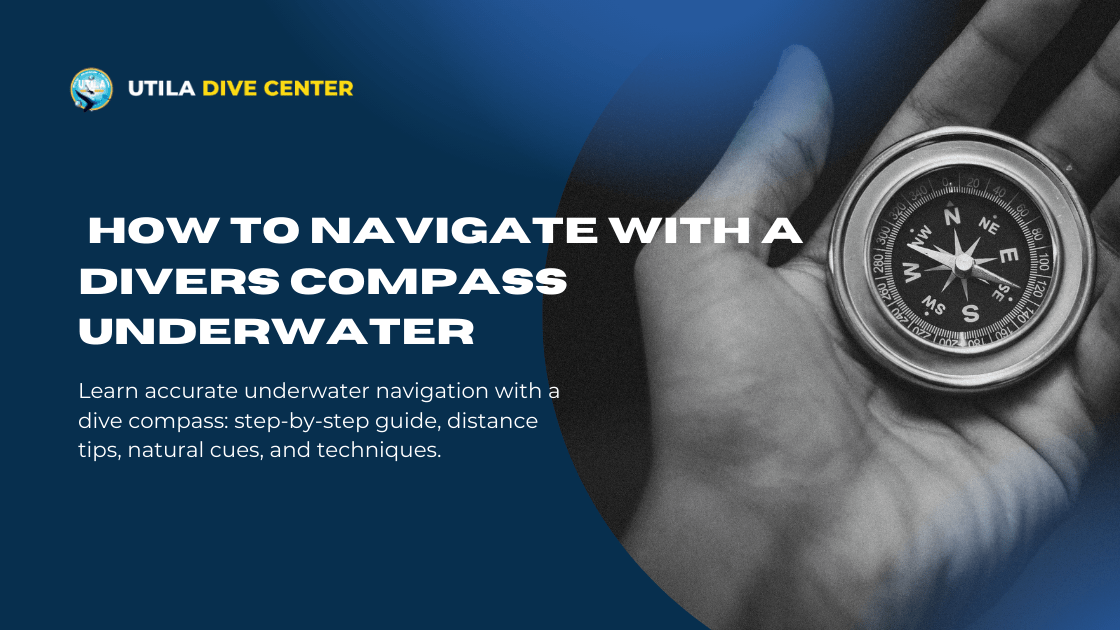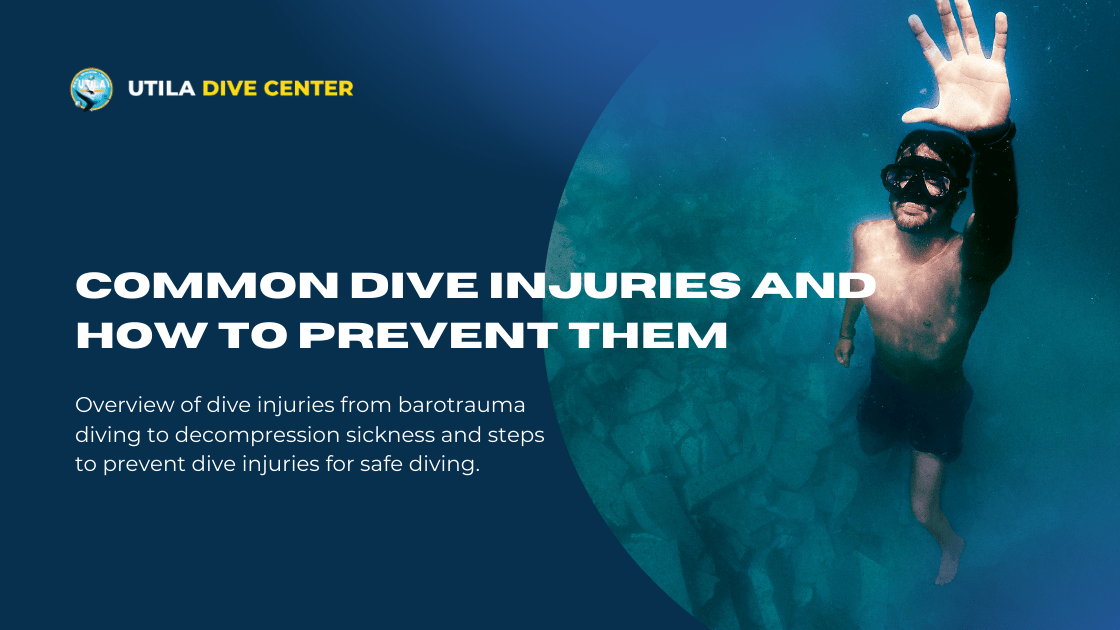
A Guide to Forecast Weather Conditions for Diving
A Guide to Forecast Weather Conditions for Diving
By: Manny Lagos | Date: 2025-07-25T12:47:45.685Z
Planning a dive trip? Then you already know how exciting it is to gear up, roll backwards into warm waters, and dive into another world. But before you take that plunge, there’s one thing that can either make or break your diving experience: dive conditions.
Yes, reading the forecast wrong, or not checking it at all can lead to strong currents, low water visibility, cancelled dives, or worse, dangerous situations. That’s why understanding SCUBA diving conditions is just as important as checking your dive gear.
Here on Utila, we’re lucky. With warm, clear waters, calm seas, and great visibility almost year-round, we enjoy some of the best diving conditions in the Caribbean. But if you’re planning to dive elsewhere, it definitely helps to know what to look out for.
In this guide, we’ll break down the key weather factors that affect diving, share the best tools/websites to check the same, and show you how to make smart on-site decisions.
It doesn’t matter if you’re a brand new diver or on your way to becoming a PADI Divemaster, knowing how to read the weather is a skill every diver should have.
Key Weather Factors Affecting Diving
Diving isn’t just about what’s beneath the waves, it’s also influenced by what’s happening above and around them.
To get a better understanding, let’s take a look at the major weather factors that can affect SCUBA diving conditions:
-
Wind
The wind might not seem like such a big deal when you’re checking the forecast, but for divers, it’s a key player. Strong winds can disturb the ocean’s surface and create choppy entry and exit points. Even worse– it can whip up strong waves and swell, reduce water visibility, and make boat rides unsafe.
What to look for:
- Wind direction: Onshore winds tend to push sediment into the water, leading to low water visibility.
- Wind speed: Gusty conditions over 17-23 mph usually mean it’s time to call off the dive.
-
Tides and Currents
High and low tides play a major role in determining when and where to dive. These cycles affect current strength, water depth, and overall access to dive sites.
What to look for:
- Slack tide (the period between high and low tide) is usually the best time to dive, because the currents are minimal, and water visibility is at its peak.
- Strong currents can make drift dives fun, but for beginners, they can often be disorienting or in some cases– risky.
Pro Tip: Always plan your dives around tidal charts and ask the locals about typical current patterns.
-
Swell and Wave Height
Big waves may look cool on a surfboard but for diving? They’re a big NO. Large swells can make shore entries and exits difficult and even dangerous. They also stir up the bottom, cloud the water, and lead to low visibility diving.
What to look for:
- Swell height under 1 meter (3 feet)
- Long swell intervals (longer intervals = gentler waves = a good diving experience)
-
Rain and Visibility
Heavy rains can wash dirt, sediment, and debris into the water, making things really murky. If you’re diving near rivers or a coastal area, the visibility might stay low for a few days even after the rain stops. So, watch out and plan accordingly!
What to look for:
- Recent or ongoing heavy rain
- Proximity to river mouths or coastal areas
- Surface conditions
- Water clarity reports
Pro Tip: Just because it’s raining topside doesn’t mean the dive’s off. You can still have a great experience, just double-check if runoff affects the sites you’re heading to, and you’re good to go!
-
Lightning and Storms
This one’s simple: if there’s lightning, stay out of the water.
Storms can roll in fast, especially in tropical places like the Bay Islands of Honduras. But the good news is, Utila is often sheltered from the worst of it thanks to our surrounding reef and coastline. Still, lightning is no joke, and storms usually bring wind, waves, and just poor dive conditions overall.
What to look for:
- Local storm warnings
- Thunderstorm predictions (especially in the afternoons)
At Utila Dive Center, we watch the weather closely every day, so you can just ask your guide for the daily updates.
Tools and Resources for Forecasting Dive Conditions
Forecasting dive conditions might feel overwhelming at first(especially with so much info out there), but with the right tools, it’s actually pretty easy, even if you’re just starting out.
Here are the best resources for checking weather diving conditions and more:
Weather and Marine Forecast Websites
- NOAA Marine Forecasts– This website is best for U.S. waters and nearby areas. It provides detailed wind, wave, and swell information.
- Windy.com– A topi-pick amongst divers, sailors, and kite surfers, this website is interactive, easy to use, and loaded with real-time wave and wind data.
- Windguru– Perfect for checking wind direction, wave heights, and swell intervals. What’s even better? You can use AI-enhanced predictions for a more precise forecast.
- ScubaWeather.com– This website is made specifically for SCUBA divers and gives detailed forecasts for popular dive sites around the world.
Mobile Applications
Websites are great, sure, but when you’re out and about, these diver-friendly apps help you check dive conditions anytime, anywhere:
- NOAA Marine Weather– This app gives real-time forecasts straight from NOAA and is perfect for checking storms, ocean conditions, and hour-by-hour weather before your dive.
- Buoyweather– Loved by divers and sailors alike, Buoyweather offers accurate 2 or 7-day marine weather forecasts, including wind, swell, and wave information. It’s great for planning boat divers or offshore trips with utmost ease and confidence!
- Tides Near Me– This app shows you updated tide times, tidal charts, and high/low tide information based on your location. Tides Near Me comes in super handy when diving from shore or planning around high and low tide windows.
- Divers Guide– This popular app gives you updated dive site reports, water visibility, and user-submitted info across tons of amazing locations. Perfect for getting real-world updates before you head out.
The best part? If you’re missing a dive site, you can add it yourself! Isn’t that awesome?
- Viz App– As you know, water visibility can be tricky to predict. That’s where this app comes in. It lets SCUBA divers share real-time dive reports in a standardised way, so you can get honest, crowd-sourced information about ocean conditions.
Local Knowledge and Dive Shops
Nothing beats local advice. Dive centers and dive schools like Utila Dive Center monitor dive conditions every day and know exactly when and where to dive. On Utila, locals also understand how bays and reefs can protect dive sites from poor weather conditions, and they’re always happy to help.
Pro Tip: Always check in with your dive center the night before and the morning of your dive. They’ll have the latest updates and safety recommendations.
Pre-Dive & On-Site Assessment
Even with all the websites, apps, and forecasts in the world, weather conditions can shift, especially in tropical areas. That’s why a final check before entering the water is so important.
Here’s how to do a quick pre-dive assessment:
- Look at the surface: Is the water calm, or are there whitecaps?
- Check the entry point: Any slippery rocks or strong surges?
- Talk to your dive guide or instructor: Are currents stronger than expected?
- Test the visibility: Use a mask or snorkel to check the water visibility before going in.
Remember: Safety comes first. If something feels off, it’s okay to postpone or cancel the dive. There’s always another day to explore the underwater world.
Conclusion:
Understanding dive conditions is a skill every diver should have. From your very first open water dive to leading students as a PADI Instructor, being able to forecast weather diving conditions can be the difference between an epic underwater adventure and a missed opportunity.
Start with the basics: pay attention to the tides, winds, swell, and rain. Use the right websites and apps, listen to local advice, and ALWAYS trust your gut when you’re on-site.
At Utila Dive Center, we cover everything from freediving safety and forecast interpretation to smart diving techniques, so you can dive confidently and enjoy every second beneath the waves.
Are you ready to learn?
References:
[1] – Divessi.com - Understanding how weather affects diving conditions
[2] – Scubadiving.com - How to check water conditions when planning a dive
[3] – Diveline.io - A guide to understanding and forecasting dive conditions
[4] – Blog.diveassure.com - Key weather conditions to consider before diving
[5] – Play.google.com - Access diving apps to check conditions and plan dives

Rebreather Diving: Everything You Need to Know
Rebreather diving offers longer, quieter dives. Discover how it works, its benefits, risks, gear, and what you need to get started with rebreather diving.
Read more
12 Rules of Scuba Diving All Divers Must Follow
We've curated a list of 12 rules of scuba diving to help you stay safe, protect marine life, and enjoy your underwater adventures with confidence.
Read more
How to Navigate With a Divers Compass Underwater
Learn accurate underwater navigation with a dive compass: step-by-step guide, distance tips, natural cues, and techniques.
Read more
Common Dive Injuries and How to Prevent Them
Overview of dive injuries from barotrauma diving to decompression sickness and steps to prevent dive injuries for safe diving.
Read more